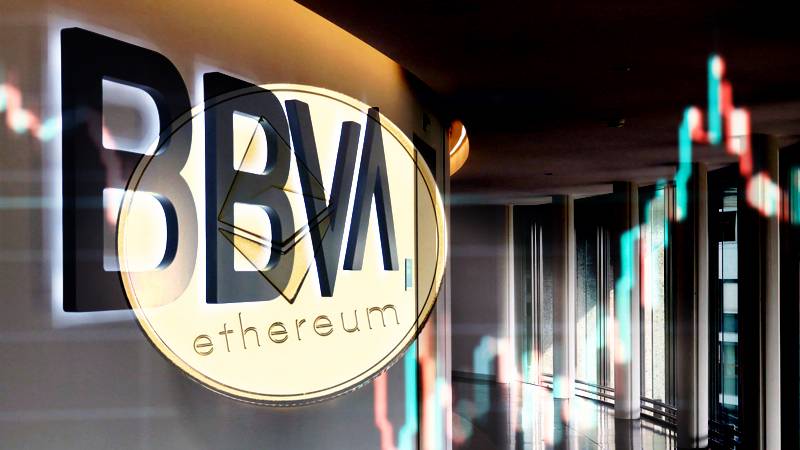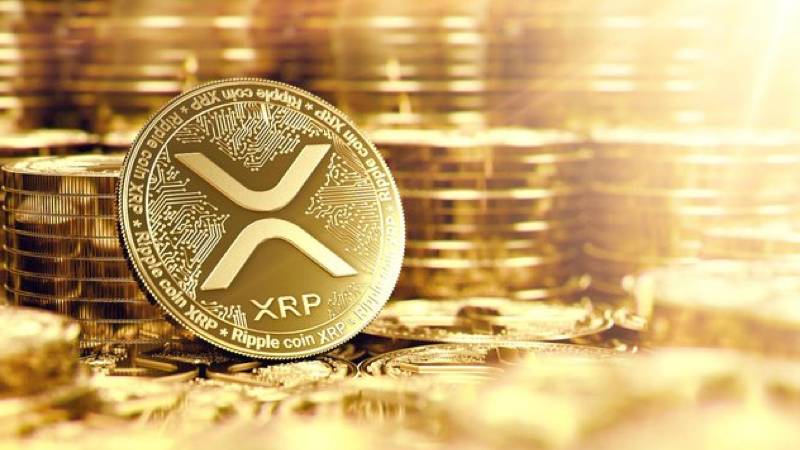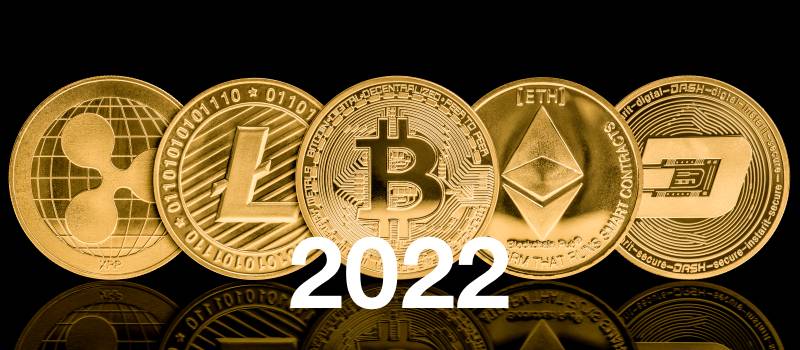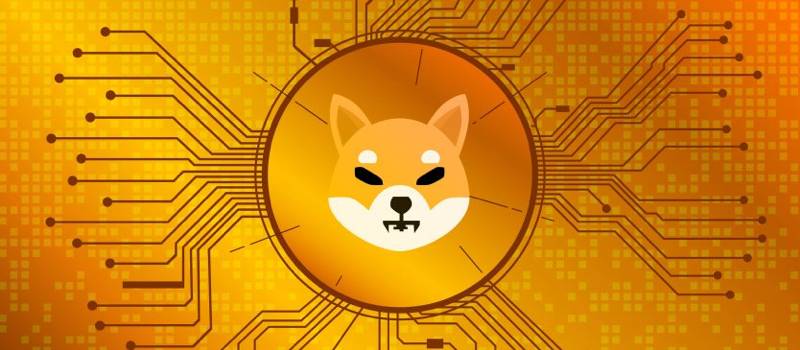December 2021 in Review
More price declines and conflicting messages hit the crypto market all through December, although there was an ever-so-slight Christmas rally which lasted for about three days. From whale watching to SEC watching, from India FUD to Santa Clause watching, we had it all in December. It certainly was not what many of us had anticipated or hoped for: the markets freely zooming to fresh all-time highs, as top crypto investors had predicted just a month before. And yet, if you look at almost all crypto from the beginning of 2021 until now, you will find we have had great strides in market value. So, what’s the problem? Perspective – as always! It all depends upon when you bought, how long you plan to hold, and how big a tolerance you have for volatility. As we head into the New Year of 2022, we have fresh new predictions of all kinds to digest – a huge rally, another crypto winter, total world Armageddon … it might happen; however, the best guidance just might be for each of us to look at the crypto price charts for ourselves and see what the patterns show from the beginning to the end of each of the past several years.
In December, analysts gave us sound logic when it came to predicting price patterns for Cardano, Shiba Inu, Bitcoin, Ethereum, and many others. We heard that crypto executives will be screened before Congress, while Fidelity decided they would take their business north to Canada. Melania issued her first NFT collection and Ripple was still awaiting a verdict from the turtle-moving SEC, although mega amounts of the coin were shuffled across platforms by Ripple Labs itself. Bitcoin adoption was seen as being more important than its actual price. Meantime, outside the U.S., India was still debating just how far they would be going to regulate crypto, and then, as whales purchased Shiba like crazy, on-chain signals indicated a clear path ahead for Bitcoin and even Kraken said it was now a good time to buy. Finally, we heard about the unfortunate British man who had accidentally thrown out his crypto wallet, along with all of his 7,500 BTC, in the days before back-up was available. I always heard that one man’s junk was another man’s treasure (and what a treasure that would be – close to $350 million at today’s BTC prices)!
Meantime let’s just hope big brother doesn’t destroy itself just yet, and all of us along with it, once and for all. Here’s to the power to combat all that is evil out there on this big blue marble of ours. Remember, if everyone wants to rule the world, that just means that most leaders of the largest nations are fools riding the cusp of failure, who will soon prove to the rest of us just how worthless and incompetent they truly were. Taking the bite of the apple has been the downfall of many, and it seems the lesson to learn is that we are not God, and so we must remain diligent when it comes to how we stake our values. Being humble in your investment strategy is always a good start. Be well, be safe, and have a happy and successful New Year!

Here’s What’s Next for Cardano, Shiba Inu, Terra and Two More Altcoins, According to Crypto Analyst
Heading into December, as declines continued in crypto, pseudonymous crypto analyst Altcoin Sherpa, who is a popular crypto strategist and trader with 154,100 Twitter followers, strategized what could be ahead for Cardano (ADA), Shiba Inu (SHIB), Terra (LUNA) and two other altcoins. He stated that he is short-term bullish on ADA after the smart contract platform had managed to stay above support at $1.48 at that point. “ADA: Not a bad place for a long. Support/resistance level, 0.50 Fibonacci level too. I still wouldn’t hodl (hold on for dear life) this though. It would be a swing trade.” At the time of his post, Cardano was trading at $1.56, down 2.85% in the previous 24 hours. Next, he pontificated about the popular meme coin Shiba Inu. He posted that he was expecting SHIB to ignite a quick bounce before resuming its downtrend, unless the Dogecoin competitor managed to consolidate around $0.000047. “SHIB: Short-term bottom is probably in. Expecting some sort of lower high to form. If this consolidates at the 0.50 [Fibonacci level], a more explosive move will come (But it’s going to take a much longer time in my opinion).” SHIB was then exchanging hands at $0.000048.
Another coin on the trader’s list was the decentralized finance (DeFi) payment network Terra, which Altcoin Sherpa said was poised to erupt to new record highs. “LUNA: Still a high time frame bullish [market structure], send to all-time highs.” The fourth coin on the analyst’s radar was the blockchain-based game ecosystem The Sandbox (SAND). He mapped out two potential scenarios for SAND after the coin printed a bearish lower high structure. “SAND: My plans are below. Let’s see where this goes. In general, I personally think a lower high just got printed, and we’re going to go lower. If a higher low comes, we will enter some consolidation, and then I’m guessing another push higher.” The last coin he discussed was Theta Network (THETA), a peer-to-peer distribution platform for video content. According to the guru, THETA can launch a massive rally once it takes out resistance at $9.61. “THETA: When this moves it will be explosive. It’s been ranging for quite some time, and I think that this one usually has its own market cycle. I would not buy this as an active trade though.”

Ethereum Whales Are Buying Three Gaming Altcoins As Bitcoin and Crypto Markets Bounce Back
Also, during the first week of the month, new data revealed which gaming tokens Ethereum whales were most interested in accumulating. On-chain data showed that the largest Ethereum whales in existence were purchasing the gaming metaverse Decentraland (MANA) above all gaming tokens. On average, each MANA whale purchase had totaled an average of $74,320 over the last seven days, according to the whale tracker WhaleStats. Whales were also accumulating the virtual gaming token powering The Sandbox (SAND), with an average purchase amount of $27,333 per transaction. Coming in third is the gaming ecosystem token Gala (GALA), with an average of $26,339 per Ethereum whale purchase. All three coins have had extremely volatile price movements in recent days, along with the rest of the crypto markets. At time of publishing, MANA was up 16.6% during the previous 24 hour-period at $5.11. The Sandbox was up 27.23% in the last day at $7.61, and GALA is up 25.3% in the same time frame, at $0.72.
Looking at the top ten altcoins purchased by Ethereum whales in the last week, the number one altcoin on the list is ETH itself, with an average purchase amount of $796,476. Coming in at a close second was FTX Token (FTT), with an average purchase amount of $725,782. That’s followed by the dollar-pegged stablecoin USD Coin (USDC), clocking in with an average purchase amount of $159,868.
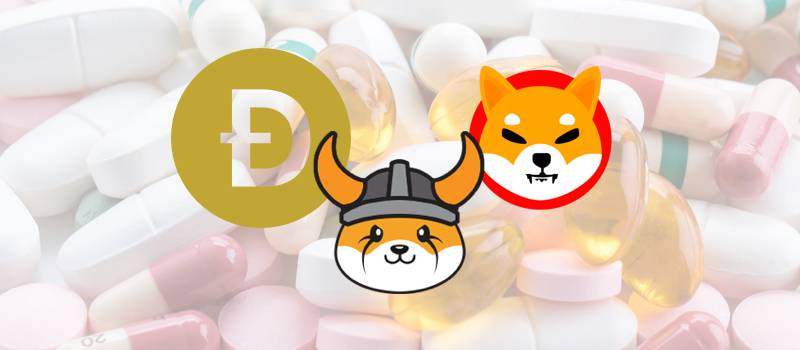
Shiba Inu, Dogecoin, Floki Enters the Healthcare Sector
A Canadian healthcare service called Ask the Doctor is accepting meme-currencies as legal payment. Clients can pay for services with cash/cards and also pay with cryptocurrencies such as Shiba Inu, Dogecoin, and Floki. Ask The Doctor held multiple polls on Twitter asking investors for their favorite choice of payment. SHIB, Doge and Floki came out on top and is now accepted as legal payment in the healthcare company. The Toronto-based healthcare company launched in 2010, and its co-founders include former NBA players Israel Idonije and Dikembe Mutombo. It was the first healthcare company to accept Bitcoin as payment in 2016 and embraced the new financial order wholeheartedly. The medical information website will accept the three meme-cryptos with its healthcare partners in the next three days. Lately, Shiba Inu, Dogecoin, and Floki have gained massive attention, having reached a mainstream audience. Just recently, AMC Theatres announced they would accept Dogecoin and Shiba Inu as a form of legal payment. After that, real estate companies in Brazil and Argentina announced they would accept SHIB as payment for their newly constructed apartments. In addition, many coffee stores and small-scale supermarkets around the world stated that they accept SHIB as payment.
Additionally, a mattress store in Tennessee by the name of Beds to Go placed a full-page advertisement in the local newspaper announcing they accept HEX. The mattress company also accepts cryptocurrencies such as Bitcoin, Ethereum, Dogecoin, Litecoin and Venmo. Moreover, customer who pay in HEX receive an extra 10% discount, and so investors who jump on the bandwagon now will reap the profits when the market goes fully mainstream. And yet, Dogecoin and Shiba Inu turned out to be the superstars of 2021 since they created high amounts of buzz on social media. Tesla CEO Elon Musk had invested in Doge in February, and he alone had the power to bring the dog-themed token to life simply with his tweets and statements. Taking a similar strategy, Ask the Doctor recently tweeted, “Ask the Doctor has love for all ‘dog tokens’ and all crypto. We believe in financial/ health inclusion for everyone globally. This is why we as a company are striving to get lots of utility for $doge, $shib, and $floki #disrupthealthcare.”

BTC/USD Risks Deeper Correction as Bitcoin Slumps to $55k
BTC/USD was confirmed to be in a range-bound move early in the month as it fluctuated between the $56,200 and $59,000 price levels. This has caused buyers to retest the $59,000 resistance level on five occasions. The rejection was caused by prices reaching the overbought region of the market. For now, Resistance Levels are: $70,000, $75,000, $80,000, while Support Levels will be: $50,000, $45,000, $40,000. Following the recent range-bound movement between $56,200 and $59,000, Bitcoin has fallen above the $56,200 support. For the past four days, the bears have been defending the $59,000 resistance zone. Assuming buyers are successful above the recent high, BTC’s price will attempt to retest or to break the $60,000 psychological price level. When this level is breached, BTC/USD will commence the resumption of upside momentum. BTC price will rally to the overhead resistance zones of $67,000 and $69,000.
Conversely, if buyers fail to breach the recent high, Bitcoin will drop to $54,000 and later to the $52,000 price levels. This will cause Bitcoin to fall to a deeper correction. Currently, BTC/USD has a bearish crossover. That is, the 21-day Moving Average (MA) line crosses below the 50-day MA line, indicating a sell signal. It is showing a level of 45 on the Relative Strength Index, indicating that Bitcoin is in a downtrend zone and capable of falling further on the downside. BTC price is above the 25% range of the daily stochastic. The stochastic bands are sloping horizontally as the bullish momentum subsides. Meanwhile, Bitcoin is consolidating above the $56,200 support as its price slumps to $55K. The current upward move has been stalled at the $57,400 high. If Bitcoin falls and breaks below the $56,200 support, the market will further decline to $53,800.

Cryptocurrency executives to be questioned in Congress
Executives of eight major cryptocurrency firms were called to testify before a U.S. congressional committee being held on December 8th. Witnesses called to appear include Coinbase’s Alesia Haas, Circle’s Jeremy Allaire, and Bitfury’s Brian Brooks. This will be the first-time companies which represent the controversial sector will be questioned in such a way before Congress. U.S. politicians across the political spectrum have called for more scrutiny of cryptocurrencies. Elizabeth Warren from the left-leaning Democratic Party has called for tougher regulation of the sector while Donald Trump has described cryptocurrencies as a scam. Mr. Brooks of Bitfury had previously served as a top banking regulator under the Trump administration. At that time, he had a role in the policymaking surrounding cryptocurrencies. Cryptocurrencies are not currencies in the traditional sense, although they can more and more frequently be used to make payments.
They are stored online in the investor’s digital wallet and act more like investment vehicles or securities, often with a high degree of volatility. However, the anonymity that comes with paying using cryptocurrencies has also meant they have been favored for criminal activities such as drug dealing and ransomware attacks. However, their supporters say this view of being used predominantly for circumventing the law is outdated and that innovation in this area offers huge potential. Countries around the world have taken radically different approaches to cryptocurrencies. China has declared cryptocurrency transactions illegal, a move India looks ready to follow. Many other central banks are eyeing the sector warily and discussing regulation. Meantime, El Salvador recently declared Bitcoin, which is the most widely established cryptocurrency, to be legal tender. Its president plans to build a Bitcoin city at the base of a volcano, with the cryptocurrency used to fund the project. Across the U.S., many private citizens hold cryptocurrencies in digital wallets, and several states and municipalities have begun toying with plans to integrate them into their operations.
The mayor of Miami and mayor-elect of New York have ambitions to make their cities centers for cryptocurrency business. The upcoming hearing before the U.S. House Financial Services Committee on the eighth, will focus on “the challenges and benefits of financial innovation,” according to the committee announcement. The other chief executives who have been asked to appear are Sam Bankman-Fried of FTX Trading, Chad Cascarilla of Paxos, and Dennelle Dixon of the Stellar Development Foundation.
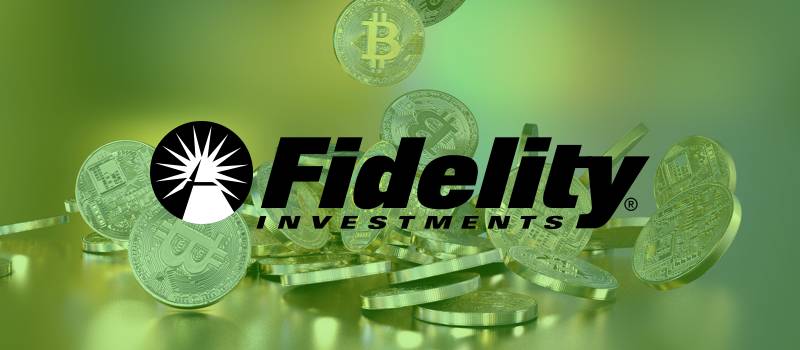
Fidelity Heads North – to Canada – With Bitcoin ETF as U.S. Fund Awaits SEC Approval
Fidelity Investments, one of the world’s largest asset managers, plans to join the spate of companies offering investors access to Bitcoin through a Canadian ETF since U.S. regulators have balked at approval of the funds. The Fidelity Advantage Bitcoin ETF will invest in Bitcoin directly or through derivative instruments, and customers will be able to make purchases in the fund with Canadian or U.S. dollars, according to a Nov. 22 filing. The exchange-traded fund, which would be listed on the Toronto Stock Exchange under the ticker FBTC, could be launched as soon as Thursday. The filing comes several months after the Boston-based Fidelity’s officials met with the U.S. Securities and Exchange Commission to urge the approval of a similar ETF in the U.S. SEC Chairman Gary Gensler has signaled that any such funds would have to comply with the strictest rules for mutual funds. Fidelity first filed for a Bitcoin ETF in the U.S. in March.
While several Bitcoin futures ETFs have recently been approved in the U.S., spot Bitcoin ETFs have yet to be endorsed. By contrast, Canadian authorities have embraced Bitcoin ETFs, which have attracted billions in investments. Bloomberg Senior ETF Analyst Eric Balchunas said on Twitter: “This should be embarrassing for the SEC that one of America’s biggest, most storied names in investing, is forced to go up North to serve its clients.” After bursting into the mainstream consciousness in 2017, Bitcoin has proven to be one of the decade’s best-performing assets, despite lingering questions about its utility and price manipulation. The largest cryptocurrency by market value has returned around 6,000% over the past five years. While Fidelity will provide custodial services for the fund assets, it retained State Street Trust Co. Canada as the registrar and transfer agent.
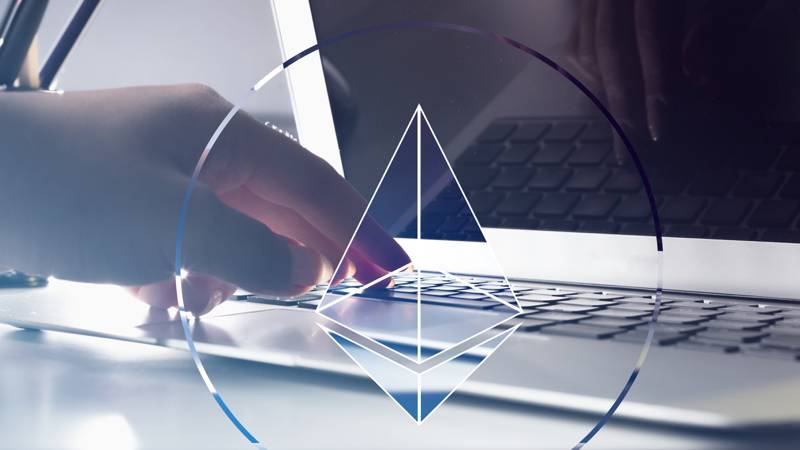
Ethereum’s Market Cap Is Now Beyond That of The Biggest Banks in The World
The crypto industry had one of its best years as it began to see widespread adoption from both retail and institutional investors. This has had a positive effect on the value of digital assets like Bitcoin and Ethereum, and the sheer market cap of these assets indicates the extent of the growth the space has seen. In fact, Ethereum’s market cap is now higher than the largest bank in the world – according to available data, Ethereum’s market cap has now risen above even that of JPMorgan. Kris Kay, a twitter user, first pointed this out on December 1 via a tweet which showed that Ethereum’s market cap was $550 billion. Per his tweet, the growth of the space is an indication of how far the coin has come in recent times. To put this in context, Ethereum has been in existence for less than a decade while the largest bank in the world, JPMorgan, has been in existence for the best part of the last 40 years.
At the beginning of December’s first week, Ethereum’s market cap stood at around $480 billion even after falling almost 5%, and despite this, it is still among the top 15 assets by market cap in the world, ranking right alongside of Facebook’s Meta, Tesla, Amazon, Bitcoin, Apple, and Microsoft. Ethereum’s blockchain is undoubtedly one of the most popular and most used blockchains in the crypto space since it is the most preferred blockchain for Decentralized finance (DeFi) applications due to its smart contract features. Apart from this, the network also processes over 1 million daily transactions via its network, and this makes it one of the most used crypto networks. However, one slight drawback is that its growth is potentially being hampered by record-high transaction fees, which it has been combatting with the implementation of EIP-1559 along with a switch to becoming a proof of stake network.

Whale Purchases 99.9 Billion SHIB Coins Worth $3.7 Million
The beginning of the second week of the month saw a mysterious and unidentified Binance whale purchasing quite a fancy number of Shiba Inu tokens. The BNB whale picked up an alluring 99,999,999,999 SHIB tokens worth a staggering $3.7 Million. This constitute 99.9 billion Shiba Inu tokens, and in English, the number is written as ninety-nine billion, nine hundred and ninety-nine million, nine hundred and ninety-nine thousand, nine hundred and ninety-nine coins. Whales have recently become rather extravagant when it comes to Shiba Inu, and due to this, they are standing apart from the rest of the whale crowd. On last Tuesday, WhaleStats tweeted, “A BNB whale just bought 99,999,999,999 $shib ($3,799,999 USD).” This particular Binance whale is ranked at the number 2 position in WhaleStats and also holds FTX, CELR, WRX, among others.
The identity of the whale remains a mystery and so it is not known if they were an individual, business, or a financial establishment. Shiba Inu has attracted whales since the last week of July and this trend has not stopped yet. During October and November, whales dominated SHIB, taking entry positions in the meme-token almost every two days. One particular whale named Gimli jumped in on the Shiba Inu bandwagon by buying the token endless times. The Gimli whale now holds a whopping 1.3 trillion Shiba Inu coins worth a staggering $50.1 million. Gimli has a unique relationship with Shiba Inu and has purchased it at every opportunity and is among the few in the market who have picked up SHIB both during its lows and highs. On December 1, 2021, Gimli had purchased 49.9 billion SHIB coins worth $2.4 million. Also, on December 3, Gimli picked up 28 billion SHIB coins worth $1.1 million. On December 7, Gimli brought 54 billion SHIB tokens worth $2.7 million again.
Whales are making inroads into SHIB because they believe it is now at a pivotal point and its price could propel much higher. The announcement of an upcoming project named ShibaNet has thrilled the community since it brings in use-case to the token. ShibaNet is a decentralized marketplace that allows users to buy, sell, and trade goods using the in-house Shiba Inu ecosystem. Shytoshi Kusama, the project lead of SHIB, spoke about ShibaNet in his Medium blog this past July. Entitling the blog ‘Shiba Inu Phase 2,’ he wrote, “A financial institution is only good as the consumers and businesses that utilize their financial instruments.” He had used this quote from Miyamoto Musashi at the start of his blog: “You must understand that there is more than one path to the top of the mountain.” And just when you might be thinking that this maybe a one off, wait! There’s more ….

Another Whale Buys 3.2 trillion Coins Worth $125 Million In Three Different Transactions
An even bigger Shiba Inu whale was born again during the middle of December’s second week. The mysterious and unidentified whale purchased more than 3.2 trillion SHIB coins worth a staggering $125 million. Identified only as an ETH whale, this purchase of SHIB came in three different transactions. This is, by far, the biggest whale transaction Shiba Inu has witnessed thus far in December, and it could be, this is just the beginning. WhaleStats was the first to disclose the enormous transactions and they tweeted all three transaction details and links. One of their tweets went like this: “Woof! Woof! New #SHIB whale was born!!! Holds 3,243,484,849,528 $SHIB ($120,342,829 USD) Transactions: Welcome to the #ShibaArmy Family!” They also included a cheerful dance GIF. Once again, the identity of the whale remained a mystery. Judging by the mammoth amount spent to buy 3.2 trillion tokens, more than likely, the notion of an individual whale can be ruled out.
Whales have dominated SHIB since the last week of July and the trend hasn’t stopped yet. There is news of a new Shiba Inu whale buying tokens almost every two days. SHIB is one of the most sought-after tokens among the top 1000 ETH whales and the community is growing steadily. During the middle of last week, a Binance whale purchased 99.9 billion SHIB coins worth $3.7 million. Also, Gimli whale has been buying SHIB regularly and now holds 1.3 trillion coins worth a whopping $50.1 million. Gimli is ranked at number 20 in WhaleStats after going all-in on SHIB. There is definitely no dearth of whale movements in SHIB, and the large transactions are only increasing day-to-day. Gimli also holds Ethereum, Hi, MANA, Fantom, SAND, Matic and Enjin. More good news for the Shiba believers: Shiba Inu announced a gaming partnership with Playside Games in a strategic work-for-hire contract. Users will now be able to access the built-in game at any place of their choice and convenience. PlaySide will provide production, design, engineering, art, user interface, and experience development services to Shiba Inu Games. SHIB has now begun venturing out to gain real world use-case with their in-built gaming platforms so that now, users can buy, sell, and transact using the in-built app that features the game along with various other things.

Despite Red Bitcoin, On-Chain Signals Flip Green
Bitcoin on-chain signals remained green even halfway through December, despite the prior few red weeks. Bitcoin’s price had taken a plunge towards $40K, which had brought a lot of losses as billions of dollars in long positions were liquidated on December 4th in one of the sharpest declines of the year. This had mostly brought down a number of metrics associated with the asset; however, on-chain signals remain resistant. On-chain data ranging from miner revenues, transaction fees, hash rates, and daily transaction volumes have all shown positive trends for Bitcoin. None of these have thus far been affected by the price decline. In fact, BTC’s hash rate is continuing its recovery trend ever since it had taken a hit with China’s crackdown on mining which took place earlier in the year. China had gone from providing about 70% of the mining power to almost zero in a matter of weeks, and this had left BTC’s hash rate to suffer greatly. This situation has since been rectified as Bitcoin miners have found new locations to resume their mining activities.
Since China banned mining, BTC’s hash rate has been gradually picking back up, and in the past week, it saw a significant increase. Now, it is up for the past seven days after the first difficulty reduction following ten difficulty adjustments. As the difficulty has dropped, the profitability of mining activities has increased. Due to this, more miners have gotten back into the game and have set up their mining rigs once more. Arcane Research reported that the increased hash rate has led to an increase in block production rate. It seems that as more miners come back on board, an average of 6.46 blocks have been created each hour in the past week, which represents a significant increase of eleven percent. Bitcoin transactions fees have remained low through the past few weeks of declining prices, but there was an established increase in fees in the past seven days, which led to, on average, transaction fees growing by 33%.
Average transaction value also jumped in the past week. As investors rushed to sell their holdings during the crash, the average transaction volume climbed by 8.3%. This was mostly due to holders with larger volumes moving their BTC to exchanges in order to sell, increasing average transaction volume, but also transaction fees at the same time.

Indian Prime Minister To Make The Final Call Concerning Crypto Regulation In India
Prime minister Narendra Modi will be making the final decision regarding cryptocurrency regulation in India. According to multiple reports, the crypto bill has been finalized by India’s Finance Ministry, but certain sections of the bill require detailed discussions, after which, the final decision will be put forward by PM Modi. A high-level meeting chaired by leading government officials last Thursday negotiated various prospects of the cryptocurrency bill amidst conflicting views. The meeting prompted government officials to discuss conflicting cryptocurrency options at length, keeping in mind the concerns voiced by the Reserve Bank of India. The options discussed in the meeting included imposing a complete ban on crypto activities in India; a partial ban; allowing all categories of crypto products with regulation; or just selecting a few with regulation. As per multiple reports, the discussion was said to continue before a final framework regulating cryptocurrencies would be introduced in the Indian Parliament.
The proposed crypto bill also includes a provision to launch a government backed CBDC, which would be a digital currency that would be issued by the Reserve Bank of India. The discussions are likely to weigh the associated advantages and drawbacks concerned with crypto trading in India after which “PM Modi will take the final call.” Certain segments of the bill will require comprehensive dialogue in order to discuss the broad framework on how cryptocurrencies will function in India. Any additional clauses will be added once the deliberations have been made and ascertained. The bill was slated to be introduced in the last budget session but was delayed as the government decided to modify certain sections of the proposed draft. Finance Minister Nirmala Sithraman had stated that the bill would first be approved by the Union Cabinet before being introduced in the parliament.
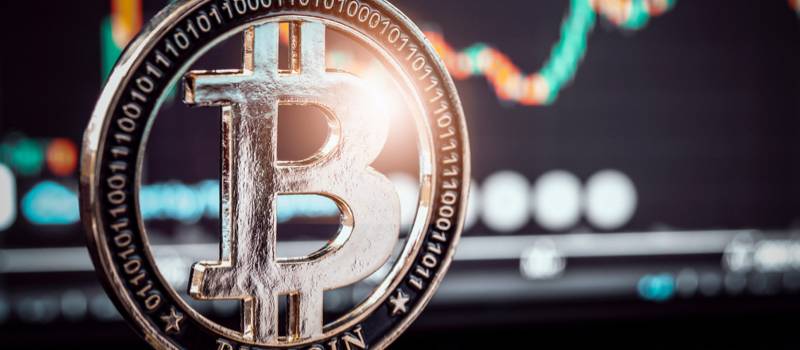
Bitcoin Price Doesn’t Matter: Adoption Does
These are highlights from a guest post by Carlos Massiah to Bitcoin Magazine. Opinions expressed are entirely his own.
Bitcoin: a new and complex technology that almost nobody is able to explain to you. Yet people always talk about Bitcoin; however, they don’t focus on the technology, but rather on the price. The Bitcoin price swings are often used by both supporters and detractors to proclaim Bitcoin’s success or impending failure. For instance, there are outlandish predictions claiming price predictions of up to $1 billion per Bitcoin, as well as articles claiming the end of Bitcoin: “Cryptocurrencies are about to become worthless – and this is what will happen when they crash” – independent opinion. Bitcoin appears to have died as many as 431 times at the time of writing. Doom predictions are often accompanied with the idea that Bitcoin is a Ponzi scheme, as well as that it is useless. Unfortunately, these types of claims represent the vast majority of articles found online. As a result, it is not surprising that the average person has a similar opinion, considering that this is virtually all the news talks about.
Today we decided to talk about something else … usage and adoption. Let’s first focus on Bitcoin the protocol (rather than the virtual coin) and let’s list a few use cases: Financial inclusion. Provide financial services for people without banks; (Relatively!) Stable alternative currency for people in “inflation nations;” Accessible cheap remittance (money transferred from abroad to a home country). Micro-transactions: Pay per article (news, blogs, etc.); Online arcade games; Machine-to-machine payments. This is not an exhaustive list, but only a few use- case examples. While remittance usage is just a cheaper alternative of existing money transfer methods, machine-to-machine payments opens up a whole new industry. As people have begun to explore these areas, Bitcoin usage has grown exponentially with time. Indeed, millions of people are actually already using Bitcoin. How can we be sure? By using metrics. For a network perspective of users, we can look at “Unspent Transaction Outputs” (UTXOs). These are coins that people own and that can be spent now.
Today there are about 76 million UTXOs, a far larger amount compared to the amount in 2011. This gives us an indicator for the growth in usage as Bitcoin as an asset over the last 10 years. Next, we can have a look at block space usage: the amount of data committed to the blockchain per block has increased over the course of the last 10 years, showing an increase in the number of data commitments (“transactions”) made and the amount of data committed. This is an indicator of the usage of the network itself. This metric will stop changing so rapidly now, as the block limit has been reached. Transactions are still increasing at a fast pace through scaling solutions like Lightning, Liquid, and Rootstock. The Lightning Network is a second layer to Bitcoin; it processes transactions instantly for low fees by using a technology called payment channels. Lightning usage has started to grow exponentially in recent months. The technology has reached a level of maturity where it is user-friendly for consumers. Due to how Lightning works, we can’t see how many transactions are made on that network, we can only observe the capacity. The people of El Salvador make use of the Lightning Network for payments, as Bitcoin is legal tender there.
More people own Bitcoin, either on Bitcoin’s ledger or an exchange’s ledger; and more people are making data commitments (“transactions”) on the Bitcoin ledger. Bitcoin social networks have also grown over the past 10 years. Alongside this, the general public’s awareness of Bitcoin has grown too. Most people have heard of Bitcoin and have a vague idea of what it is. Reddit has also grown in number of users; this is a reflection of the broader growth of Bitcoin communities and participation in Bitcoin projects. Twitter has recently added tipping, which allows anyone in the world to tip using BTC over Lightning. The U.K.’s Financial Conduct Authority consumer research has found that 78% of adults in the U.K. are aware of cryptocurrencies. This varies per country, but on the whole, most adults know of Bitcoin. Bitcoin ATMs can be found in 78 countries worldwide. We also see a pattern of rapid growth, doubling every year. The spread of ATMs reflects the integration of Bitcoin into people’s daily lives. ATMs are also a way for people working in foreign countries to send money home to family or receive money. ATMs are used for small purchases for regular individuals, not by traders who would rather use exchanges.
Many people use Bitcoin without an exchange however, or even without having a bank account. People can get access to Bitcoin by either getting it from friends and family, earning it, or using an ATM. Bitcoin Beach in El Zonte is an example of a circular Bitcoin economy where people earn and spend in Bitcoin, many of whom don’t have a traditional bank account. Peer-to-peer trading platforms like LocalBitcoins have high Bitcoin trading volumes in developing nations and in countries with distressed currencies. Adoption and usage metrics are telling us the story of whether Bitcoin is useful or not. So far, every year, more people have decided to use the Bitcoin protocol and the Bitcoin asset in their lives. Each of these metrics are showing a doubling in 1-2 years, or a growth rate of 50-100% per year. Taking the pessimistic estimate of 200 million users, and assuming a lower growth of 30% per year, we will see 2 billion users within 10 years. Realistically, reaching 2 billion users might happen much faster, given that we don’t know the true number of current users, nor the ultimate network effects from giants like PayPal, Visa, Amazon, and Google, etc.
BBVA Switzerland becomes the first traditional bank in Europe to add Ethereum to its crypto offering
The Swiss division of the Spanish banking giant, Banco Bilbao Vizcaya Argentaria (BBVA), became the first traditional bank in Europe to include Ethereum into its service when it recently expanded its crypto offering and announced the addition of Ethereum to the bank’s investment portfolio. Back in June, BBVA Switzerland had initially made Bitcoin available in its trading and custody service to all its private banking clients. Alfonso Gómez, CEO of BBVA Switzerland, in a statement released early last week, said, “We decided to add Ether to our crypto asset ‘wallet’ because, together with Bitcoin, they are the protocols that spark the most interest among investors, while also offering all the guarantees to comply with regulation.” The bank revealed its plans to continue expanding their cryptocurrency portfolio in the coming months, “thus making it easier for its customers to invest in this new digital world,” according to the announcement, which then added that the “expansion to new countries or other types of customers will depend on whether the markets meet the right conditions in terms of maturity, demand and regulation.”
Starting with Bitcoin, the Spanish banking giant’s Swiss franchise launched its crypto offering back in June. Following the launch of the Bitcoin trading and custody service, Gómez had then explained, “This gradual roll-out has allowed BBVA Switzerland to test the service’s operations, strengthen security and, above all, detect that there is a significant desire among investors for crypto-assets or digital assets as a way of diversifying their portfolios, despite their volatility and high risk.” BBVA Switzerland’s private banking clients and customers with a New Gen account can view Bitcoin and Ethereum, along with other traditional investments, on the BBVA app. New Gen is the bank’s 100% digital investment account, which can be accessed with an initial deposit of $10,000, and is available for residents of the European Union, Mexico, Colombia, Argentina, Peru, and Chile, among others. The account offers access to a catalog of companies and funds, and it also features a cryptocurrency wallet.
Following Bitcoin’s Price Dip, Kraken’s CEO Sees a Major Buying Opportunity
Heading into the third week of the month, the Bitcoin market had become rattled to see that Bitcoin had dipped below $48,000, and several market players expressed worry over the plunge. Jesse Powell, the CEO of Kraken, has long been a big supporter of Bitcoin’s price, stating that a price below $40,000 would be a good time to buy. Powell’s ability to foresee Bitcoin’s price swings has been quite remarkable, and he had made the price call on Bloomberg TV after being asked if he agreed with Galaxy Digital CEO Mike Novogratz. Due to the current year-end selloff, Novogratz recently told Bloomberg that he believed Bitcoin will bottom out at $42,000 or slightly lower, but that it would then gain momentum, as would the crypto market, in the medium run. On Wednesday of last week, BTC was maintaining around the $47,500 level and had a trading volume near $30,219,475,014 with a market cap of $900,272,666,300. The Kraken CEO said that it would be difficult to foresee short-term price movements since he thought of Bitcoin as a long-term investment. “In many ways, it’s a speculative asset, but you can’t help but be impressed by how far it’s come and how much innovation is going on around it,” he said. Powell also predicted a grim outlook for the US dollar. He warned that the price might drop to zero and advised people to stock up on gasoline and milk. During its high-stakes Wednesday meeting, the United States Federal Reserve had been expected to announce that it would be moving away from monetary easing, setting the stage for the first interest rate hike in years.
Melania Trump NFT Collection Set to Be Released
The week before Christmas, the former first lady of the United States, Donald Trump’s wife Melania, announced the upcoming launch of her very own NFT platform. Posting to her official Twitter @melaniatrump, she stated that she was “Excited for this new venture, which combines my passion for art and commitment to helping our nation’s children fulfill their own unique American Dream.” Also added to her post was the hashtag #MelaniaNFT, which was a link to where the NFTs will be released – MelaniaTrump.com – and a copy of the press release, Melania Trump NFTs. The full announcement from the office of Melania Trump mentioned that the first NFT will be named ‘Melania’s vision,’ and that it would become available to purchase for a limited period, between December 16th – 31st, 2021. That non-fungible token will be a watercolor artwork by Marc-Antoine Coulon, priced at 1 SOL. It will also include an audio recording from Mrs. Trump. More NFTs will follow at regular intervals, and there is an auction scheduled for January 2022.
Melania Trump’s NFT’s will be available for purchase using Solana (SOL) or credit card payments through Moonpay. Solana can be purchased on the regulated cryptocurrency exchange eToro. A portion of all of the proceeds will go to various children’s foster care charities. Melania has a history of charity work over the years, including with 4KIDS in Florida. “Through this new blockchain technology-based platform, we will provide children computer science skills, including programming and software development, to thrive after they age out of the foster community,” Melania added. NFTs are potentially a good investment at this time, as the crypto markets may have found a bottom last week. With no negative news coming from last Thursday’s FOMC meeting, Bitcoin, Ethereum and Solana have since bounced several percent.
XRP TRAPPED BETWEEN $0.75 AND $0.85, AS THE MARKET REMAINS STAGNANT
A Brief Market Overview: For the first few weeks of December, the crypto market as a whole has remained stagnant. BTC largely changed hands between $45,000 and $50,000, with lower lows and highs along the way, and this alone clearly represents a slack market. XRP itself seems trapped between $0.75 and $0.85, and there have been very few bullish signals for the token. Within a bullish environment, crypto would be expected to make higher highs and higher lows. Similar price action has been exhibited by almost all the other mainstream cryptocurrencies, with most of the top coins seeing lackluster performance, except for a few. Avalanche would be one of those, and it has gone up by nineteen percent during this period. As for Ripple – XRP Technical Analysis shows that it is the most stagnant among the top 10 cryptos, and during this period it has recorded a high of $0.88 and a low of $0.77, with very slight change the past few days of last week. While XRP shows resistance at $0.85, it also has a support at $0.75, and presently, the token remains trapped in between.
If it manages a break in either direction – through the current support or resistance levels – it would then redefine those at $0.70 and $0.90, respectively. The first major technical indicator in this scenario would be XRP market volume, which seems to be quite flat in the last seven days, as the token fails to bring any adequate momentum to deviate from the current price range. Secondly, XRP’s Relative Strength Index (RSI) does show some bullish signals, as the chart makes higher lows. At the moment, XRP’s RSI stands below 50 points, and to generate some momentum the coin must break through it. As we head towards the year’s end, there could be a bullish wave, as we can recall that it was in December 2020, that Bitcoin had risen from $18,000 to surpass $29,000, and, as they say, the rest is history…
5 TOP NFT CRYPTOCURRENCY TO INVEST IN NOW – DECEMBER 2021 – WEEK 3
Non-fungible tokens (NFTs) have gained mainstream adoption in the past year, and this emerging sub-sector has since recorded over $10 billion in trading volume. Naturally, investors are searching for the top NFT cryptocurrencies to put their money into, and these five have come up among the best possible candidates. In no particular order, they are:
#1. Decentraland (MANA):
Decentraland has become a beacon in the fast-rising NFT and metaverse ecosystems. It is an Ethereum-based protocol which focuses on 3D virtual reality experiences, enabling users to create, share, and monetize virtual items. Catering to businesses, Decentraland facilitates the purchase of virtual plots of lands which creators and developers can build on for large gains. Ever since Facebook rebranded Meta and announced its decision to redefine its focus into the crypto space, Decentraland has become a popular NFT. Soon after the rebranding, MANA shot up to a record high of $5.85 on November 25. And yet, The ERC-20 token has since dipped 45.6% from its all-time high (ATH) of a month prior. Year-to-date (YTD) increase stands at 4233.98%, and the 12-month trailing increase is at an impressive 3775.46%. Decentraland-based RTFKT Studios have recently joined the Nike team, further boosting the platform’s appeal as a top NFT cryptocurrency to invest in now.
# 2. The Sandbox (SAND):
The Sandbox is another top NFT cryptocurrency, and, not surprisingly, the asset is very similar in makeup as Decentraland. It has an Ethereum protocol which aims to revolutionize the gaming industry and how users interact with digital content. The Sandbox features developer and user-friendly tools that enable anyone to create, share, and monetize in-game assets. These include The Sandbox Game Maker, which encourages the creation of 3D games for free. Also, the VoxEdit enables the animation of 3D objects while users can tap The Sandbox Marketplace to sell their digital creations. The Sandbox, a late starter in the year, zoomed to prominence following Meta’s foray into the NFT discourse, at which time SAND hit a record figure of $8.40. SAND has lost almost 45% of its record price since then and sits at $5.2511, down 5.11% in a largely bear climate. As with close rival Decentraland, SAND has posted a remarkable YTD of 14659.94% so far this year. This follows strong fundamentals, with the latest being the purchase of a virtual 6 X 6 estate on The Sandbox by Uniqly for $500,000.
# 3. Axie Infinity (AXS):
In a year of remarkable growth in blockchain-based gaming, Axie Infinity is a prized jewel for the NFT niche. A Pokemon-inspired gaming platform, Axie Infinity’s phenomenal success year-to-date is due mostly to the partial share gamers have in the protocol’s core operations. Axie Infinity is the most popular blockchain game and has become one of the top NFT cryptocurrencies. Players get to breed, collect, battle, and then monetize in-game characters called Axies. Each Axie comes with unique capabilities, and players can exchange these NFTs for real cash. Axie Infinity has largely seen bullish returns in the run-up to the top spot on the global gaming chart. Its governance token AXS has remained an outlier through much of the crypto winter that characterized the second half of 2021, with the digital currency hitting an ATH of $164.90 in early November. Although the ERC-20 token has since slipped by 40.7%, AXS has traded close to the $100 mark. Its YTD increase stands at an outstanding 14659.94%, with a yearly gain of 10,634.83%. Axie Infinity also has the highest NFT sales, per data from NFT aggregating platform DappRadar.
# 4. Enjin Coin (ENJ):
Enjin Coin has real-world applications and is another NFT which has roots in the gaming industry. As well as hoping to revolutionize the gaming space by driving up a player-driven economy, Enjin Network enables the tokenization and subsequent transfer of in-game assets across several platforms. As well as this, the Ethereum-based protocol operates as a social platform where gamers and users can chat, create websites, clans, and host virtual item stores. These virtual items can then be swapped for real-world value. The Enjin Network is also closely working on enabling a new gaming society. The Enjin Network is expanding into the heterogeneous network Polkadot to slow the increasingly high gas fees inherent in the Ethereum network. Enjin’s Efinity aims to become the first NFT platform to launch on the shared network. YTD growth stands at 14659.94%.
# 5. MyNeighbor Alice (ALICE):
Although still under development, MyNeighbor Alice is an NFT-driven protocol which has continued to make milestone price gains throughout this year, with the digital token hitting a record high of $40.93 in mid-March. MyNeighbor Alice is set to be a shrewd investment in the coming year as the protocol operates as a multiplayer builder game where users can buy and own virtual islands, collect and build in-game items, and make new friends. The game features a 3D gaming experience while adding to the excitement of collecting NFTs. To further propel the growth of NFTs and the subsequent metaverse, MyNeighbor Alice has launched an $80 million Metaverse Grant in collaboration with Chromia blockchain. ALICE is currently trading at around $13.00.
Holy doubletake, Batman! Seems like everyone is now jumping on this bandwagon….
718.3 Million XRP Shuffled By Ripple Labs And Its Major ODL Platforms
As we entered Christmas week, Whale Alert reported that a staggering 718.3 million XRP had been kicked over by several crypto asset companies – Ripple, Binance and two more digital exchanges. Over half of that amount was sent by Ripple Labs in two massive lumps. The total worth of the transferred XRP was close to six-hundred million US dollars. Ripple wired over half a billion XRP, as shown by data shared by the major crypto tracking platform, when it conducted two mammoth-sized transactions of 460,669,182 and 120,000,000 XRP, which totaled $364,871,463 and $95,718,622 in fiat currency, respectively. The transfers were made from the same Ripple wallet which had zero coins left after the transfer, and the funds went to different addresses belonging to the company.
Additionally, 137.7 million XRP was sent from Binance and ODL platforms, and yet another three impressive XRP transactions (however, they were not as large as the ones made by Ripple) were spotted by Whale Alert prior to those performed by Ripple. Binance shifted 80 million XRP between its wallets, and an anonymous wallet moved 20 million XRP to Bitso – the first crypto unicorn in Latin America and the leading exchange in Mexico. According to the data from BIthomp website, this crypto was sent from the US-based Bittrex exchange. Finally, Bitso shifted 17,700,000 XRP internally, while another transaction from Bittrex delivered 20 million XRP to another Ripple ODL corridor – Bitstamp, located in Luxembourg.
A BRITISH MAN HAS SEARCHED THROUGH A VAST LANDFILL FOR 8 YEARS TO FIND HIS $350 MILLION LOST BITCOIN WALLET
While doing some spring cleaning back in 2013, a British man threw his old PC hard drive into the trash, which quickly joined the mountain of rubbish at the local landfill site in Newport, Wales, UK. James Howells did not know it at the time, but that same hard drive contained a wallet filled with 7,500 Bitcoin, which was then worth a cool $665,000 (this was still in the early crypto days). Well, now that wallet is worth $357 million. Once realizing his mistake, Mr. Howells began a frantic search for the hard drive and has been searching ever since. Over the past eight years, James Howells has been crawling through mounds of rubbish in the desperate search for his $350 million junkyard nest egg. In an interview with the newspaper The Guardian back in 2013, Howell stated, “I had a word with one of the guys down there, and explained the situation. And he actually took me out in his truck to where the landfill site is, the current ditch they’re working on. It’s about the size of a football field, and he said that something from three or four months ago would be about three or four feet down.”
He continued, “I’m at the point where it’s either laugh about it or cry about it. Why aren’t I out there with a shovel now? I think I’m just resigned to never being able to find it.” After that interview, it was said that Howells had all but resigned himself to the fact his fortune would never be claimed. But soon thereafter, he began to search all by himself and now he still believes there is hope that the drive is both reachable and readable even in its deteriorated state. In a last-ditch effort, he has now recruited residents of his local town to join the hunt, with the promise of millions if the search succeeds. The odds are certainly stacked against him, and this was made worse by the Newport City council’s refusal to permit any volunteers to enter the site. CNBC recently reported that in explaining their reasons for denying permission to search the mountains of garbage in the landfill, the city council cited the ecological damage which trawling through buried rubbish can cause, that there was a lack of a permit for anyone to search the rubbish, and that there was a great probability that the hard drive was already destroyed. Sadly, if Mr. Howells cannot find the drive, his Bitcoin is lost forever. Like most crypto, Bitcoin is untraceable, and in the early days of mining, one could not back-up one’s wallet. These issues have led to unfortunate scenarios where people have lost the physical drives that their crypto is on, or they had forgotten their passwords – such as the story of another man who has just a few guesses left before he is forever locked out of his $240 million Bitcoin fortune.
Commit it to memory, people!
BITCOIN, ETHEREUM, AND OTHER CRYPTOS MAY BECOME A LITTLE LESS VOLATILE IN 2022
Bitcoin prices have been on a wild ride this year, like most years past, and even so, they are set to finish 2021 sharply higher than where they began it. Beginning the fourth week of December, one Bitcoin was trading for just under $51,000, a stunning surge of 68% from last January levels. But the top crypto is also down nearly 30% from its record high of almost $69,000, which it hit in November. So, what could be next for Bitcoin and other cryptocurrencies? There is no denying that crypto has gone mainstream – the total value of all cryptocurrencies in circulation stands at more than $2.2 trillion, with Bitcoin accounting for about $920 billion of that total. Ethereum is starting to close the gap. Having taken the art and collectibles world by storm, Ethereum, which is a popular crypto for the smart contracts and non-fungible tokens (NFTs), has a market value of $475 billion. ETH prices have more than quintupled this year, going from around $730 per coin to $4,000.
There are now several Bitcoin exchange-traded funds (ETFs) for individual investors to choose from, and ETFs which will invest in other top cryptos could be coming very soon. Nick Elward, senior vice president and head of institutional product and ETFs at Natixis Investment Managers, recently stated, “The next possible step is for additional ETFs for other coins to launch. There probably will be an Ether ETF in early 2022.” Major professional and institutional investors, including top fund managers George Soros and Stanley Druckenmiller, have been investing in crypto. Still, the latest pullback is a stark reminder of how notoriously volatile Bitcoin and other crypto prices can be. Many investors rushed into Bitcoin in 2017 and watched prices surge from about $1,000 per coin to a little below $20,000 by December of that year. Then came the crash, with Bitcoin plunging to as low as $3,500 by the end of 2018. Those prices obviously have recovered — and then some — but it took until December 2020 before the coin got back to the $20,000 mark.
Assuming these rapid swings in crypto prices are here to stay, the key, experts say, is for investors to learn to stomach them and ride out the inevitable ups and downs. Anton Chashchin, managing Partner of Bitfrost, a digital assets service provider, said in an email to CNN Business, “More than once we have observed a correction in the market. If institutional investors begin to take profits, then it can cause a ripple effect.” He added that large, institutional firms will likely continue to flock to Bitcoin because they see it as a potential hedge against inflation and rising interest rates, and this could hurt traditional government-backed currencies. His email went on to say, “Even if the source of institutional investor interest is the Fear of Missing Out (FOMO), all of the institutional decisions have been made after careful consideration. These firms have come around to the potential benefits of cryptos.” However, he believed that this increase in the adoption and legitimacy of cryptocurrencies also will likely help to mitigate some of its volatility. Prices may still move sharply, but the shifts may not be as violent as in the past few years.
John Wu, president of Ava Labs, an Ethereum-compatible blockchain firm, looked at it this way: “Having larger institutions with deeper pockets and steadier hands buying cryptos will help. They can withstand the volatility. We expect more dispersion in the crypto world. Prices will move more based on adoption. Cryptos won’t be trading in tandem as much.” Natixis Investment Manager’s Nick Elward also believes that more fund managers will be looking closely at cryptocurrencies, and that they may likely move beyond passively run Bitcoin ETFs that simply mirror the direction of Bitcoin futures. “Active is a logical fit for crypto investors. I expect more managers in there analyzing which are the most appropriate ones to buy,” he said. He felt that crypto is a natural extension of the so-called alternative investment world, which is a group of assets beyond stocks and bonds that typically includes gold and other precious metals. Some experts believe that Ether and the world’s third most valuable cryptocurrency, Binance coin, could continue to gain market share versus Bitcoin. “You have to look at the utility of cryptos. Ether could eventually be bigger than Bitcoin. It’s the rails for NFT transactions,” said Alex Lemberg, CEO of the Nimbus Platform, a decentralized finance lending firm.
RIPPLE COULD PUSH HIGHER AND OPEN THE PATH FOR NEW CRYPTO ONCE THE SEC SUIT AGAINST RIPPLE LABS ENDS
A resolution of the SEC suit could eventually allow cryptos to be more easily bought in the U.S. Ripple (CCC: XRP-USD) has generally been drifting down over the last month. After peaking on Nov. 10 at $1.33 per token, it has, more or less, been on a steady slide ever since then. By December 12th, XRP-USD stood at 84.55 cents, and has now rebounded back to about 92 cents. While Ripple was being dragged along by prevailing crypto trends for the first three weeks of December, its legal battle with the Securities and Exchange Commission (SEC) could be a game changer for the crypto world. A keen observation would lead one to see very clearly that Ripple has been following the paths that Bitcoin and Ethereum carve, albeit on a more pronounced basis. This means that it tends to have more volatility and variance, but its direction still seems to be set by Bitcoin and Ethereum. Currently, XRP-USD is well below its peak of $1.839 on April 13. Nevertheless, so far this year, it is still up 256% year-to-date from 23.744 cents at the end of last December 2020.
Ripple is now the 8th largest cryptocurrency in the world and has a market cap of right around $40 billion. It’s just below USD Coin (CCC: USDT-USD), a stablecoin with a market value of $41 billion, and Cardano (CCC: ADA-USD), which has a market value of around $45 billion. So, just what is the legal battle with the SEC all about? Ripple’s parent organization, Ripple Labs, the promoting company for XRP-USD, is in the middle of a major battle with the SEC stemming from whether the sale of XRP-USD tokens is considered a sale of unregistered securities, as the SEC claims. In November, Ripple had gone as far as outlining their own vision for the future of a cryptocurrency regulatory framework in the U.S. Brad Garlinghouse, the CEO of Ripple Labs, told CNBC that he thinks that the case is nearing an end. According to Coin Telegraph online magazine, Garlinghouse told CNBC that despite the slow-moving judicial process, the case seems to have made progress. He said he believes that the case will be over in 2022.
More importantly, he said that the judge in the case realizes that the issues deal more than just with Ripple Labs. He said that he liked the questions from the judge in the case. Even more interesting is the fact that Ripple is looking to do an initial public offering (IPO) after the case is resolved, and this will be very important because almost all of the new issues of cryptocurrencies these days have been in foreign markets, not the U.S. Other than the recent crypto loans made by chains that operate on Polkadot (CCC: DOT-USD), almost all of the initial coin offerings (ICOs) have been by non-U.S. corporations and by non-profit corporations. These coins then begin trading on non-U.S. exchanges and only some eventually show up in the U.S. This is what makes it difficult to buy the handful of the many thousands of cryptocurrencies available around the world. There are only about 200 or so cryptos that trade in dollars on Coinbase Global (NASDAQ: COIN) and Crypto.com.
Once the lawsuit ends, particularly if it end in Ripple Lab’s favor, the rules on listing currencies and ICOs, along with other major issues for U.S. investors, could be much clearer. It would also allow more cryptos to be listed in the U.S. and for companies that sponsor them to do IPOs and ICOs. If that happens, expect to see Ripple move significantly higher as investors look forward to the Ripple Labs IPO.
SHIBA INU CAN EXPECT A MAJOR REBOUND IN 2022 AS LOSS HARVESTING FADES
Finally, Shiba Inu (CCC: SHIB-USD) has had a rough time in the last several months after peaking at $0.00008719, which amounted to 0.87 ten-thousandths of one dollar, on October the 27th. Now trading for 0.3829 ten-thousandths of one dollar, that essentially means it has dropped about 58% in less than two months, which is a dramatic move, and likely reflects a large amount of tax-related selling before the end of the year. Investors wanting to take advantage of tax losses before the end of the year, this alone could have led to much of the selling. SHIB-USD was at a recent peak of 52.8 ten-thousandths of one cent on November 30th, and so, just in the last 28 days, it has dropped from 52.8 to 38.29 (ten-thousandths of one cent), or down about 30%. However, it is believed that once the new year begins, the downward pressure from tax-related selling should go away and this could lead to a major rebound in the crypto’s price. The only problem with this theory is that it has not been tested since Shiba Inu has not been around showing the major gains it had this year for long enough.
A year ago, SHIB-USD was much lower than it is today, and it was essentially not trading at the time. For all intents and purposes, everyone who bought Shiba Inu before October 21st has a profit, while virtually everyone who bought after that date, and who have held onto it, now have an unrealized loss of some sort. A good many of these people are selling now, and if we look at BTC and ETH for similar historical examples at the end of last year, we can find similar patterns. For example, Bitcoin peaked on November 30th, 2020, at $19,625 and later dropped to a trough of $18,264 by December 10th, 2020. After that, BTC-USD took off and started climbing. The same pattern occurred last year with Ethereum. For example, a year ago, on December 18th, 2020, ETH-USD peaked at $659.30, and later, by December 22nd, it had dropped to $583.71. That represents a drop of 11.5% in a few short days before the end of the year. It probably felt similar to today that the selling was going to continue for the foreseeable future. Of course, it didn’t, and today, one year later, ETH-USD is around $4000, or almost 6.8 times the price a year earlier.
By the way, Ethereum is now well off of its highs earlier last month when it peaked at $4,812 on November 7th. It’s now down about 14% to $4,067 from its peak. This is not the same as the 30% drop that Shiba Inu has taken. But that might be expected, given that Shiba Inu has a market cap of $17.25 billion, vs. the $470 billion market cap with Ethereum. In other words, the smaller digital currency will tend to have higher volatility, and so this greater drop is not out of the ordinary. Important to remember that this mechanism works on the upside as well. If we look at the patterns, investors in Shiba Inu now should expect to make a much higher return on investment (ROI) than those in Ethereum over the next year.
The post <h5>Monthly Newsletter</h5> <h3>The Digital Asset Landscape December 2021</h3> appeared first on JP Fund Services.
Tradersdna is a leading digital and social media platform for traders and investors. Tradersdna offers premiere resources for trading and investing education, digital resources for personal finance, market analysis and free trading guides. More about TradersDNA Features: What Does It Take to Become an Aggressive Trader? | Everything You Need to Know About White Label Trading Software | Advantages of Automated Forex Trading


























